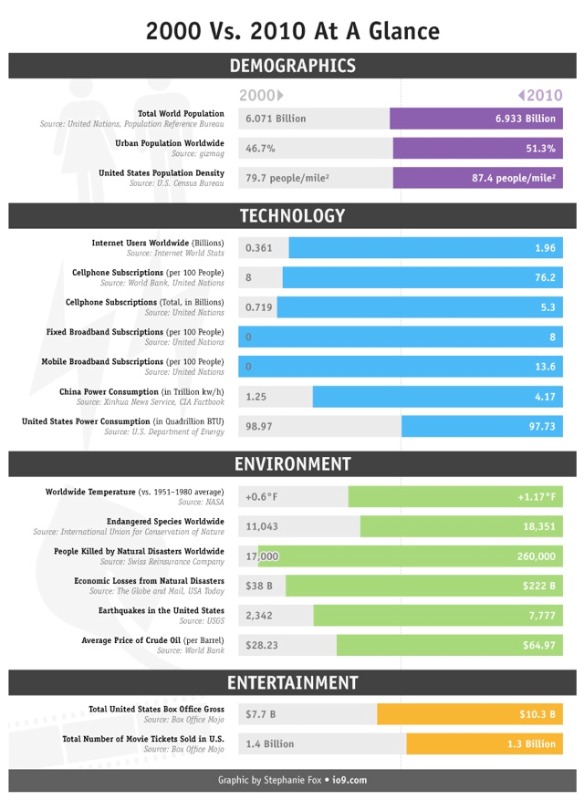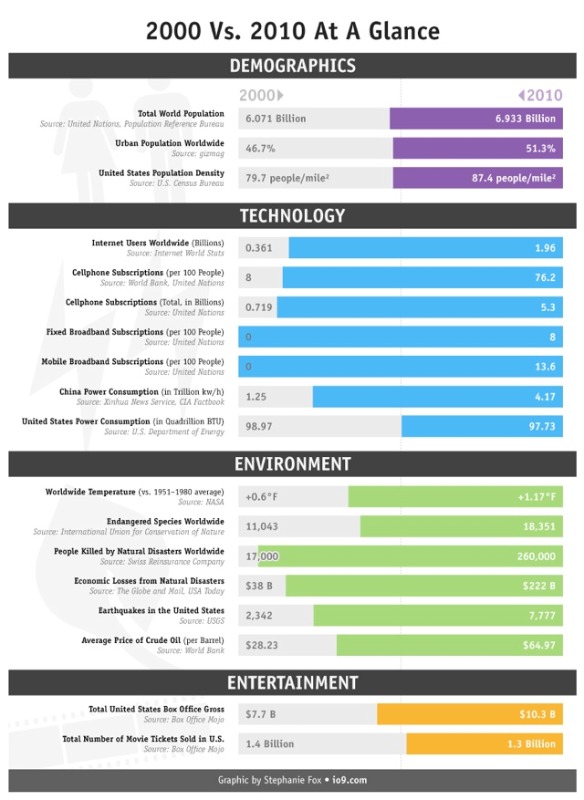To say the world has changed between the year 2000 and 2010 would be the understatement of the decade, dare I say even the century (thus far). From day to day it can be hard to think of all the ways in which our lives have changed, but the good folks at Gawker Media site i09 have compiled an infographic that lays bare how different a world we inhabit in just 10 years.
The 21st century will be a century of prolific shifts towards sharing behavior if trends continue apace. Two specific data points are worth noting; the rural-to-urban shift, and the explosion in the Internet population and the number of connected devices.

The total population of the Internet in the year 2000 was 361 MIlion, which in 2010 was 1.96 Billion, according to Internet World Stats. The number of cell phone subscribers leapt from 719 Million to 5.3 Billion during the same ten-year interval.
The shift of the global population from rural to urban has obvious ramifications for the rise of collaborative consumption. The density of urban areas allows resources and durable goods such as vehicles to be shared more efficiently, cutting down on waste, minimizing the energy needed to manufacture new stuff, and creating stronger social ties. The balance of power between urban and rural areas shifted dramatically, from 46.7 percent of the world in cities in 2000 to 51.3 percent urban dwellers in 2010. When everyone is connected to the Internet through their desktop computer or mobile device, the opportunities to join sharing networks increase exponentially, as do the number of goods and services that can be shared, swapped or given away.
Katie Fehrenbacher of GigaOm writes,
The Internet–th[r]ough its social network capabilities–is uniquely able to break up the ownership of a good into an efficiently managed service around access. Basically you can eek out a whole lot more use out of a good when you can finitely manage the time and usage within a specific population.
As Fehrenbacher points out, Higher Density + Connectivity = A Rich Environment for Sharing.
While there are plenty of good signs for the growth of collaborative consumption, the section of the above chart with environmental statistics is still cause for alarm. The number of endangered species has increased by 60 percent in 10 years, from 11,804 to 18, 351. While collaborative consumption between humans is a great way to minimize the harm we each inflict on the planet, it's important to remember that we also share the Earth with our furry, four-legged, finned and winged neighbors.









